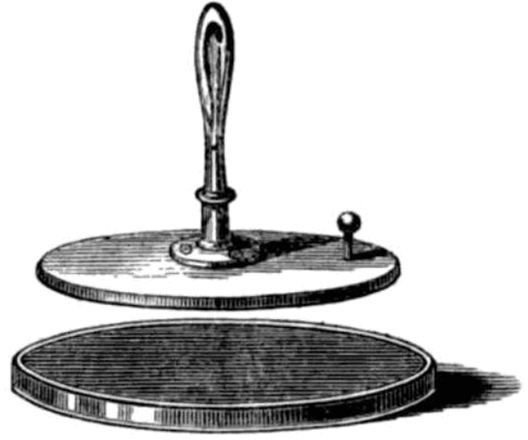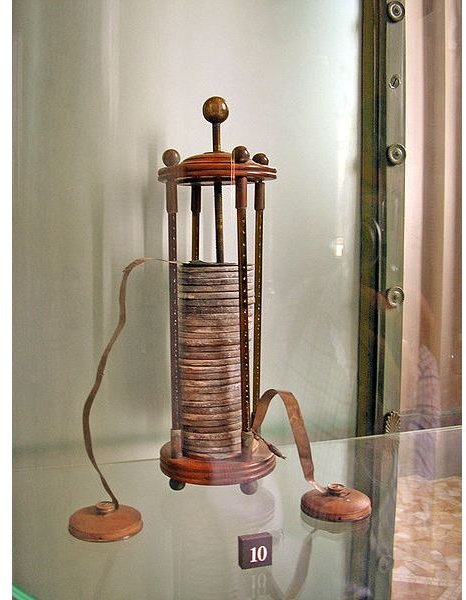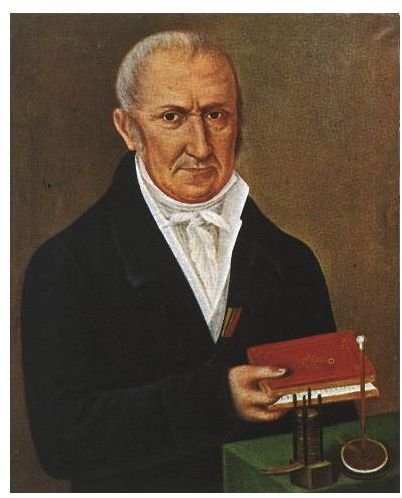The First Battery: Invention of Alessandro Volta
Alessandro Volta
Alessandro Giuseppe Antonio Anastasio Volta was born in Como, Lombardy, Italy on February 18, 1745. He is mainly remembered for inventing the voltaic pile, a forerunner of today’s batteries.
Volta attended the public school in Camo, Lombardy and had a normal childhood. Later he became a school teacher in his hometown and was able to do research in a variety of fields, including physics and chemistry.
Volta’s Research and Inventions

The Electrophorus
Alessandro Volta was the first to apply the term “Electrophorus” to a device invented by another physicist, Johan Wilcke of Sweden. Volta did extensive research into this device and made improvements as well as popularized it with his people. The electrophorus is a device that produced a static electric charge when the top was rotated.
Discovery of Methane
Volta discovered the gas called methane in 1776 or 1777. He found it being emitted from a from a swampy marsh near his house, collected it, and tried to ignite it with an electric spark in a closed vessel. Thus he performed early research into what would become a subject of intensive research into landfill gas as an alternative fuel centuries later.

Volta, il Professore and his Early Battery
Volta became a Professor of Physics at the University of Pavia in 1779 and taught there for over 25 years.
It was also there that, by 1800, his research led him to construct a forerunner of the electric storage battery. Called the “voltaic pile,” it was capable of producing a steady stream of direct current electricity.
Volta observed that an electrical discharge was caused when two metals were submerged near each other into an acidic solution. This led him to create what he called the “column battery” that consisted that of alternating copper and zinc rings stacked in glass tube and all completely submerged in an acidic solution.
He first called it the “artificial electrical organ,” perhaps in reference to a well-known electric fish called the “topedo,” which was capable of providing strong electric shocks. It later became known as the voltaic cell or voltaic pile.
This discovery of the energy conversion of chemical energy into electrical energy built the foundation for today’s batteries.
The Revolution Made
- Alessandro Volta was awarded the title of Count by Napoleon Bonaparte for his discoveries.
- The unit “Volt” was coined to pay respect to the great physicist.
- Methane was researched by many more scientists and became the fifth-most used fuel in the world.
- The Italian government printed 10,000 lire currency notes with a central image of Alessandro Volta to pay tribute to him.
References
- Case Western Reserve University - Electrochemical Encyclopedia - Volta and the “Pile” - Electric Fish
- Image of Volta’s Battery via Wikipedia Commons
- Image: Wikipedia Commons, Alessandro Volta
- Natural Museum of American History - Origin of Electric Power
- Image: Wikimedia Commons, 1764 drawing of electrophorus by Johan Carl Wilcke
